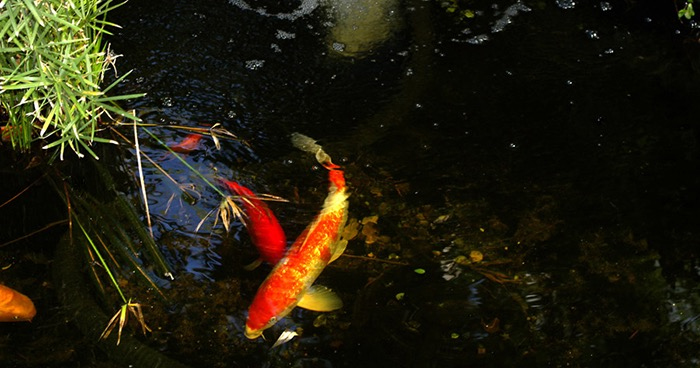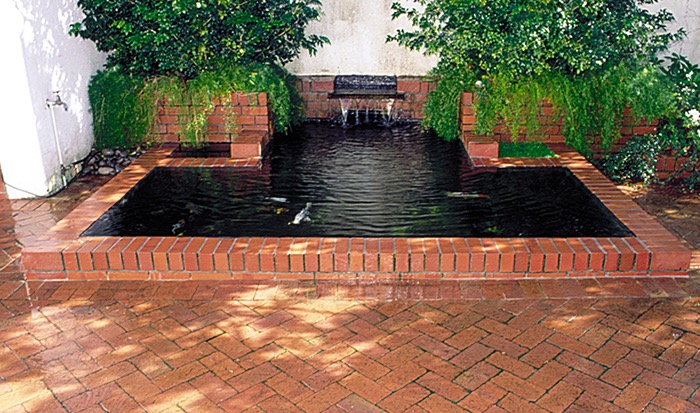
What Are the Advantages and Disadvantages of Japanese style Plants for a Koi Pond?
Question: Would a Koi pond be better with no plants at all?
ANSWER
The advantages of Japanese style plants in any pond or pool that has been planted up in the way you would plant a traditional garden pond, with a complete range of different types of water plants in aquatic baskets are:
- Submerged oxygenators would oxygenate your water during the day whilst providing a spawning mat for the fish.
- Deep water plants like lilies and floaters would provide protective surface cover and shade that would help the fish and inhibit algal growth, but above all in a koi pool, they will be using up those nitrates and other compounds that many biological filters fail to break down.
- Marginal plants too would join in this task whilst softening the edges and blending the pool into the rest of the garden. All this with the added bonus of flower, growth, and movement.
The disadvantages are:
Koi carp have a tendency (not always) to wreck the whole shebang.
They are inquisitive fish that love to graze, rummage, rub, and play with plants. The water just seems to be permanently murky with all the mud they stir up.
Also, this helping hand from nature all but fades out in October as the plants die back and the serious koi keeper has to rely on the technology of his filtration units and a keen eye on the quality of the water to keep his or her charges healthy through the winter months. Milder winters keep the Koi metabolism ticking over at a rate that is hovering on a stop/go level that makes them particularly prone to disease and stress particularly in a well-stocked Japanese style pool. The last thing that is required in a koi pool is rotting vegetation.
Having said this there is generally no problem if the stocks of fish are kept well below the 2 inches per square foot of surface area, an active biological filter system, there is methodical dredging, leaf nets in Autumn, and routine water changes as pollutants build up in the Spring.
Japanese rockery
Q. Can you tell me what kind of plants I can use in a Japanese style rockery or rock garden?
A. The Japanese favor slow-growing pruned evergreens for rockery and rock areas, things like various types of box, dwarf azaleas, and small camellias are part of a Japanese style garden.
The form is more important than the flower in a Japanese style garden.
It is us westerners that indulge in florrid flamboyance. Trees that show the ravages of time like the red Pine (Pinus densiflora), and the Black Pine (Pinus thunbergi). Japanese acers never look out of place even on a bank, particularly the Acer dissectum varieties. Next to water they love to weep down to their reflection creating a spectacular effect. Visit Tatton Park in Knutsford, Cheshire, or Holland Park in central London to see two of the best British Japanese style gardens.
More Japanese-style garden plants to add beauty to your fish pond environment
Q. We finished building our pond a couple of months ago and it’s now been up and running for the past six weeks. Of course, these things turn out much more expensive than you first thought, so we’ve had to wait a while to finish off the landscaping. Can you recommend some plants that would fit in with a Japanese style garden?
A. It is one of Murphy’s laws of landscaping that there is never enough money for the plants at the end of the project no matter how large the budget.
In true Japanese style gardens, the Japanese themselves will choose plants from a remarkably few groups of plants despite the fact that so many of our favorite garden plants come from Japan. They like the garden to be a slow-growing static scene that is loaded with symbolism and representation. Time is marked by the seasons and in turn, these are marked by the color of various plants. In spring there is the Cherry blossom (particularly the Yoshino Cherry, Prunus x yeodensis, or the Japanese Apricot, Prunus mume) and then the Camellias.
In Autumn there is coloring of the maple leaves. In between we allow ourselves in this country the vibrant colors of dwarf rhododendrons and Azaleas, but the Japanese would be just as content with pruned box because their priority is structure and form in the garden.
Pines like the Red Pine, Pinus densiflora, Black Pine, Pinus thunbergii are pruned and distorted to create features. Screening plants can also include bamboos and ground cover is usually just moss.
However having said this, there is something inherently Japanese in the look of any plant indigenous to Japan and you will find that if you make a garden using these, there will be something in the atmosphere that is essentially Japanese. Take for instance the trees Cornus controversa variegata, Malus x zumi (a Japanese Crab apple), or the shrubs like Hydrangea macrophylla, the Cotoneasters, Chaenomeles, Fatsias, Kerria, Magnolias, Loniceras, Spiraeas and Viburnum plicatum ‘Maresii’ (theWedding cake tree).
Perennials can include the Japanese Irises, hostas, Primula sieboldii, chrysanthemums, some asters, Peonies, Hemerocallis, and Polygonums. This is only a small selection of possibilities but I’m sure it is enough to get you going.






